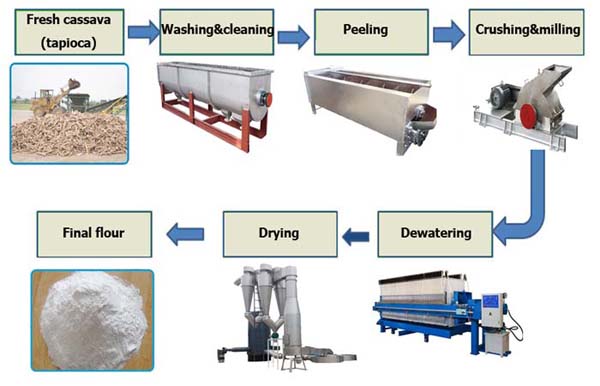Large capacity cassava flour production line
Release Time:2020-10-11 14:17Author:sd888Source:未知
Any questions about the product can be communicated with us at any time!
Large capacity cassava flour production line-commercial cassava garri machine processing-yam cassava processing maching diagram
Process flow of large-capacity cassava flour production line:
Technical process:
Fresh cassava-cassava washing and peeling-grinding-dehydration-drying-sieving-final cassava flour
Machine order:
Dry screen-paddle cleaning machine-cassava peeling machine-crusher (hammer mill)-plate and frame filter press-vibrating screen-jet flash dryer
The complete cassava flour production line consists of 6 process parts, as shown below:
1. Cassava cleaning and washing part:
The loose dirt, sand and gravel in the cleaning and washing area of the cassava flour production line are removed. It will require some machines to work together, including a cassava sieve and a paddle washing machine.
2. Cassava peeled section:
The cassava peeler in the cassava flour production line will remove the outer skin and inner skin of cassava to produce high-quality cassava flour.
3. Cassava flour grinding section:
The cassava flour mill grinds the peeled cassava into small particles for the processing of cassava flour.
4. Pressure dehydration section:
The large-scale cassava flour production line uses a plate and frame filter press to remove water as much as possible from the cassava mash.
5. Cassava flour drying part:
The special design of the cassava flour quick dryer will dry the wet cassava flour twice to completely dry the outside and the inside of the cassava flour in the cassava flour production line.
The cassava flour dryer is specially designed for low temperature. It can also be used to dry materials with high moisture content.
6. Screening and packaging part of cassava flour:
The dried cassava flour is sieved to separate large particles to ensure the fineness of the final cassava flour. Large particles will be ground again through a fine mill to minimize production losses.


